SOLAR / ANECHOIC by Alastair Philip Wiper
The world's largest solar furnace and wave-reflecting chambers are captured in this series of images documenting the architecture of science and research facilities by British photographer Alastair Philip Wiper (+ slideshow).
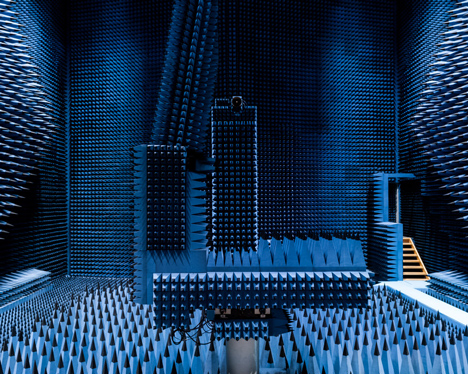
Alastair Philip Wiper has photographed a variety of structures built to test technologies and facilitate research, with the aim of celebrating the visual impact of industrial and scientific architecture.
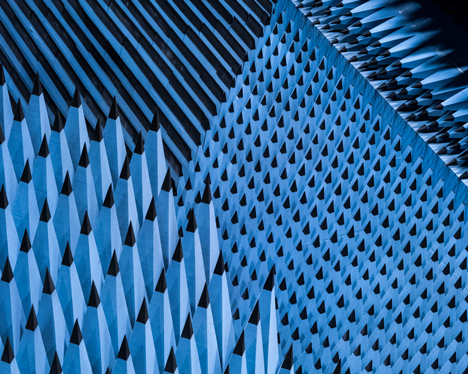
The series includes a radio anechoic chamber, a room designed to absorb all sound or electromagnetic reflections that is used for testing microwave antennas for satellites and mobile networks.
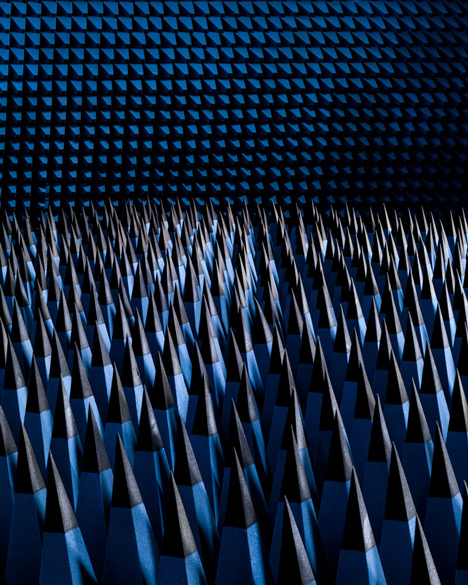
The chamber at the Technical University of Denmark appears to have thousands of sharpened pencils protruding from all surfaces. Carbon powder is contained within the spikes, which are coloured blue rather than black, as they were previously, to make the space less depressing for those working inside.
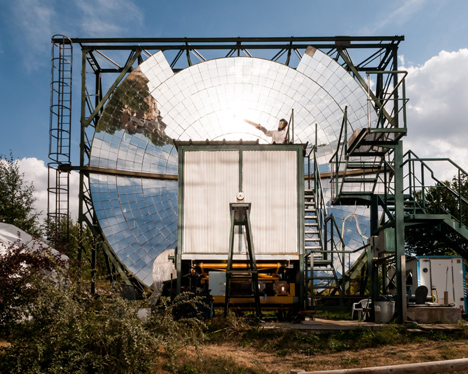
Also included is the Mont-Louis solar furnace, built in 1949 by Dr. Felix Trombe in the French Pyrenees - a region that benefits from excellent solar conditions. The contraption concentrates the sun's rays onto a tiny area where objects can be heated to extremely high temperatures.
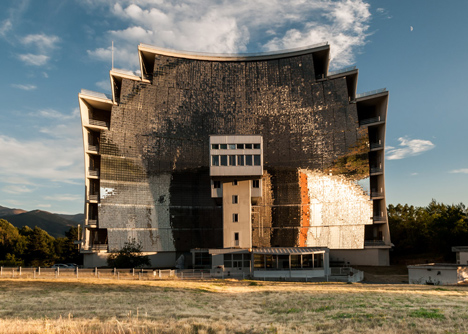
The giant parabolic mirror of the Odeillo solar furnace - the largest solar furnace in the world, also built by Trombe in 1970 - does the same job on a much bigger scale, and reflects the surrounding landscape on its shiny panels.
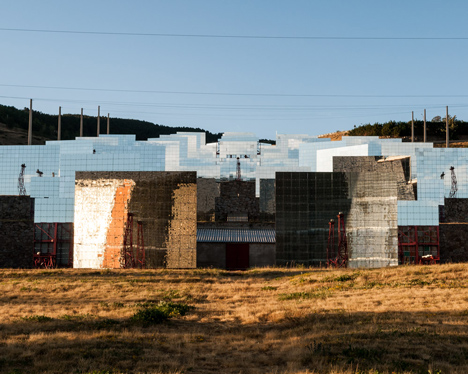
The images are currently on display at the Gallery Etage Projects in Copenhagen as part of the city's photography festival.
Previously we've published photos taken inside Google's data centres, pictures of the Large Hadron Collider at CERN and a series of images showing ruined World War Two monuments across former Yugoslavian territories.
The photographer sent the following text:
SOLAR / ANECHOIC
SOLAR / ANECHOIC deals with the unintentional beauty of science and research facilities: in particular, the anechoic chambers at the Technical University of Denmark (DTU) and the Four Solaire in the French Pyrenees, the world’s largest solar furnace. These facilities are designed to be purely functional, to push the limits of heat, radio and sound waves, and they are awe inspiring in their contribution to the advancement of mankind both on our planet and in space. They are also remarkable in another way: their visual impact. Without understanding the complexities of the functions of the facilities it is possible to marvel at the ingenuity of human beings and their ability to create such inadvertent masterpieces.
Alastair Philip Wiper is a British photographer based in Copenhagen and working worldwide. Alastair’s work provokes analysis of the magnificence of human ingenuity, and the importance of industry and science as a cause for celebration. The search for his subject matter has taken him to weird and wonderful places such as the laboratories of CERN in Switzerland, waste incineration plants in Denmark, and gin distilleries and flour mills in the UK.
“An anechoic chamber (an-echoic meaning non-echoing or echo-free) is a room designed to completely absorb reflections of either sound or electromagnetic waves. They are also insulated from exterior sources of noise. The combination of both aspects means they simulate a quiet open-space of infinite dimension, which is useful when exterior influences would otherwise give false results.”
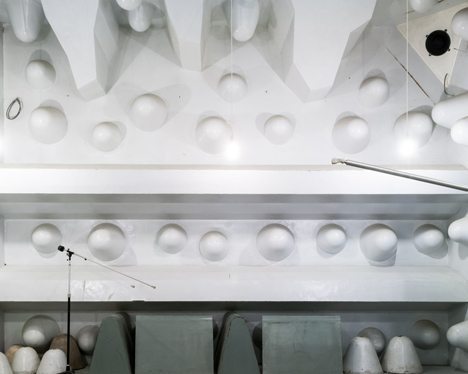
The radio anechoic chamber at Denmark’s Technical University (DTU) opened in 1967, and is currently operated in cooperation with the European Space Agency (ESA) for the testing of microwave antennas for use in satellites and mobile networks, among other things. The idea is to minimise any reflections of microwaves, and the big foam spikes are filled with carbon powder to absorb the radio waves. This tests the effectiveness of the antennas without any external intrusion, simulating the conditions of, for example, space.
Many of these chambers are blue in colour, and according to Sergey Pivnenko, the professor in charge of the chamber, most of them were black in the old days – then some bright spark noticed that it was a bit depressing to work in a black spiky room all day, so the manufacturers of the spikes started to produce them in blue.
A resonance chamber uses resonance to amplify sound. The chamber has interior surfaces that reflect an acoustic wave. When a wave enters the chamber, it bounces back and forth within the chamber with low loss. As more wave energy enters the chamber, it combines with and reinforces the standing wave, increasing its intensity.
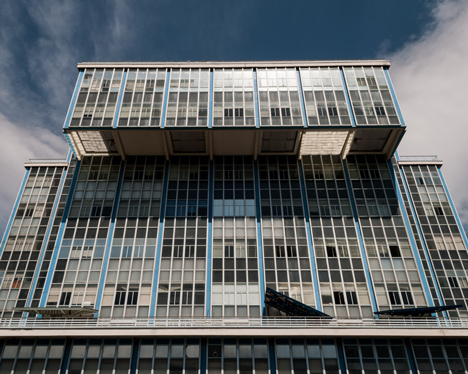
Due to the excellent conditions for solar energy, the region of Cerdanya in the French Pyrenees has been a site for solar experimentation for over half a century. The region enjoys almost 2400 hours of sunshine per year, very low wind and a high elevation to provide stronger sunlight. This is the Mont-Louis solar furnace, built in 1949 by Dr. Felix Trombe and the first of its kind in the world. The solar furnace concentrates the power of the sun into a tiny area where objects can be heated to extremely high temperatures; this heat is completely pure because there are no burning substances that can pollute the heat.
In 1970 Dr. Trombe opened the worlds largest solar furnace a few kilometers away at Odeillo, and the furnace works on the same principle as its older, smaller brother: the sun’s energy is reflected on a series of mirrors and concentrated on one very small point to create extremely high temperatures. The immense parabolic mirror, tall as the Arc de Triomphe in Paris, reflects the countryside and sky, giving an ever changing patchwork view of the surrounding area that is beautiful and fascinating to watch, and focuses the sun’s rays onto a point about the size of a cooking pot, where temperatures reach 3,500 °C.
The furnace is still used by space agencies like NASA and the European Space Agency (ESA), scientists, and technology companies to research the effects of extremely high temperatures on certain materials for nuclear reactors and space vehicle reentry, and to produce hydrogen and nanoparticles.